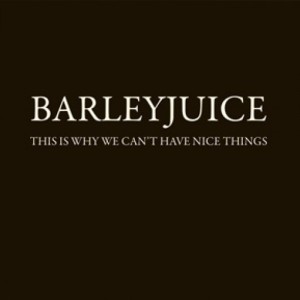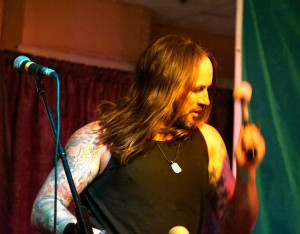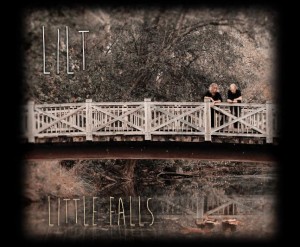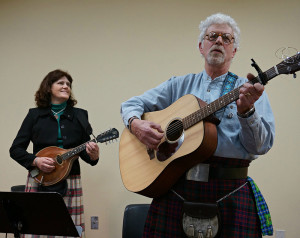 Let’s just say that “This Is Why We Can’t Have Nice Things,” the new CD from Barleyjuice, is a party. A loud, raucous, boozy blowout.
Let’s just say that “This Is Why We Can’t Have Nice Things,” the new CD from Barleyjuice, is a party. A loud, raucous, boozy blowout.
And when I say booze, I mean waking up on the kitchen floor with your head in the cat dish, and wondering how all that onion soup dip wound up in your shoes.
For example, this snippet of lyrics from the second track, “3 Sheets to the Wind”:
“Let’s go down to whiskey town
Land of song and sin
We’re not leaving till we’re weaving
Three sheets to the wind.”
The title might also be a dead giveaway.
Bands like “Barleyjuice” are popular because there’s a pretty big market for drinking songs. Some people like rebel songs. Others like traditional folk ballads. And plenty of people like drinking songs. Different strokes for different folks. And face it, drinking songs go back. Way back.
So belly up to the bar, boys. And girls.
Barleyjuice is in great form on this recording. Spot-on lead vocals, and seamless harmonies. Relentless, pile-driver rhythms. Mean, nasty, slashing guitar riffs.
If you can’t wait for the St. Patrick’s Day pub crawl, you can get a head start with the opening tune, “St. Patrick’s Day.” Kyf Brewer take the lead on this rock anthem dedicated to post-New York City parade shenanigans. Brewer sounds like he might have swallowed ground glass somewhere along the way. And I mean that in a good way.
I could call this tune “catchy,” but it really grabs you by your lapels and shakes the hell out of you. You’ll become a one-person mosh pit.
On this tune, guitarist Keith Swanson seems to be channelling the guitarist for whatever band played “I Fought the Law and the Law Won.” (OK, it was the Bobby Fuller Four. Don’t send me any emails.) It’s all clangy, jangly retro chords. Really fun.
The fourth track, “Catholic Guilt,” takes a jaundiced view of that aspect of Irish heritage. There’s a great bit of call and response between Brewer and the rest of the band on the chorus, a kind of steroidal sea shanty. Some brassy in-your-face fiddling on the bridge by Alice O’Quirke. We could talk about the lyrics in depth, but suffice to say references to “plastic Marys” pop with some frequency.
O’Quirke later takes the lead on vocals—and plays very sweetly, on a sweet little jiggy number, “Whelan’s Barroom.”
Keith Swanson is out front on “Whiskey for Christmas,” a tune that at times sounds like a song recorded by The Kinks, although I’ll be darned if I can remember which one. And just to mess with your head further, the harmonies remind me of John and George from almost any of the Beatles’ early stuff.
Clever chameleons.
Again, it takes a good bit of talent to pull off smart mash-ups like these and still come across as a loose bunch of rowdies. I admire that kind of talent. So get up on your feet, turn this CD all the way up, and scare the cat. You didn’t like that cat, anyway.







